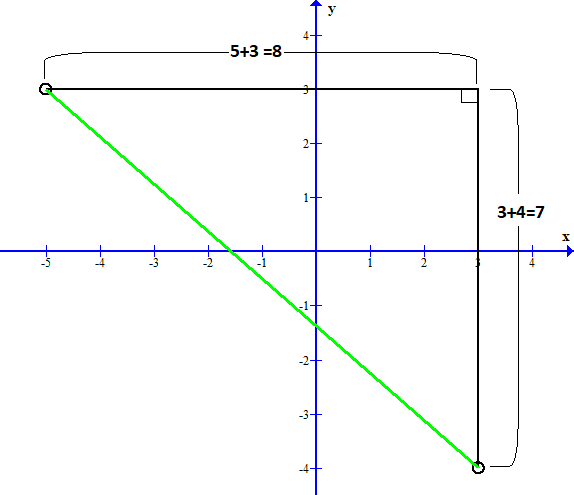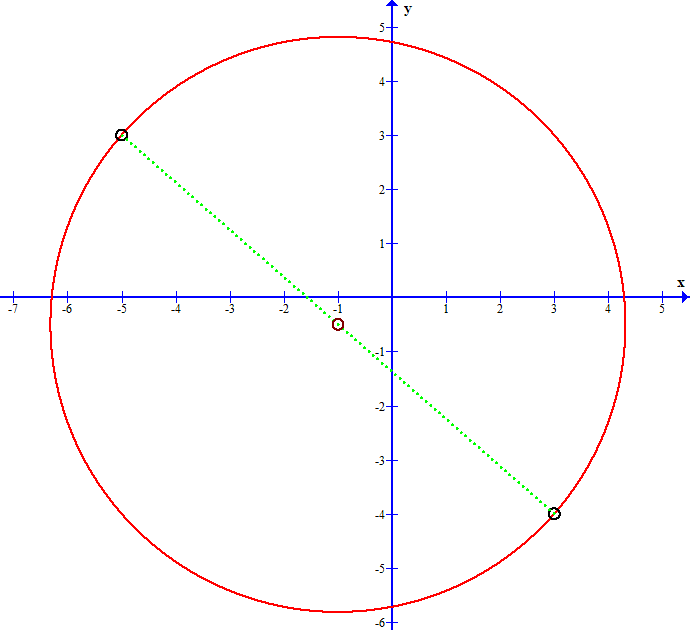The coordinates of the endpoints of a diameter of a circle are (-5,3) and (3,-4). What is the: i. equation of the circle? ii. length of the diameter? iii. equation of the diameter?
2 Answers
i.
ii. Diameter:
iii. Equation of diameter:
Explanation:
The diameter of the circle is the length of the line segment between the given points
and it can be calculated using the Pythagorean Theorem

From the above image we can see that the diameter has a length of
The radius is half the length of the diameter:
The center of the circle is the midpoint of the line segment between the given points. One way to find this is to take half of the distance up from the point lower right and half of the distance to the right of the point in the upper left.
That is, the center of the circle will be at
The general equation for a circle with center
Using the values we have determined the equation for this specific circle:

~~~~~~~~~~~~~~~~~~~~~~~~~~~~~~~~~~~~~~~
I'm not sure what you meant by "the equation of the diameter".
Perhaps you only wanted the expression for evaluating the length of the diameter (if so, it has already been given above).
Alternatively, you might have meant the equation of the line between the given endpoints. In this case we simply employ equivalent slope values
which can be converted into standard form:
See below.
Explanation:
We are given the end points of the diameter, the midpoint of the diameter is the centre of the circle. In order to find the equation of the circle, we need to find the radius and the coordinates of the centre.
First find the diameter. We use the distance formula for this.
Using the end points:
So the radius is
We now find the coordinates of the centre.
Using coordinates of the midpoint of a line segment:
Using endpoints of the diameter again:
The general equation of a circle is given as:
Where
So we have:
Plugging in these values:
I'm not absolutely sure what you mean by the equation of the diameter. I am assuming you mean the equation of the line that passes through the end points of the diameter. To find this we first find the gradient of this line using the endpoints again.
Using point slope form of a line:

